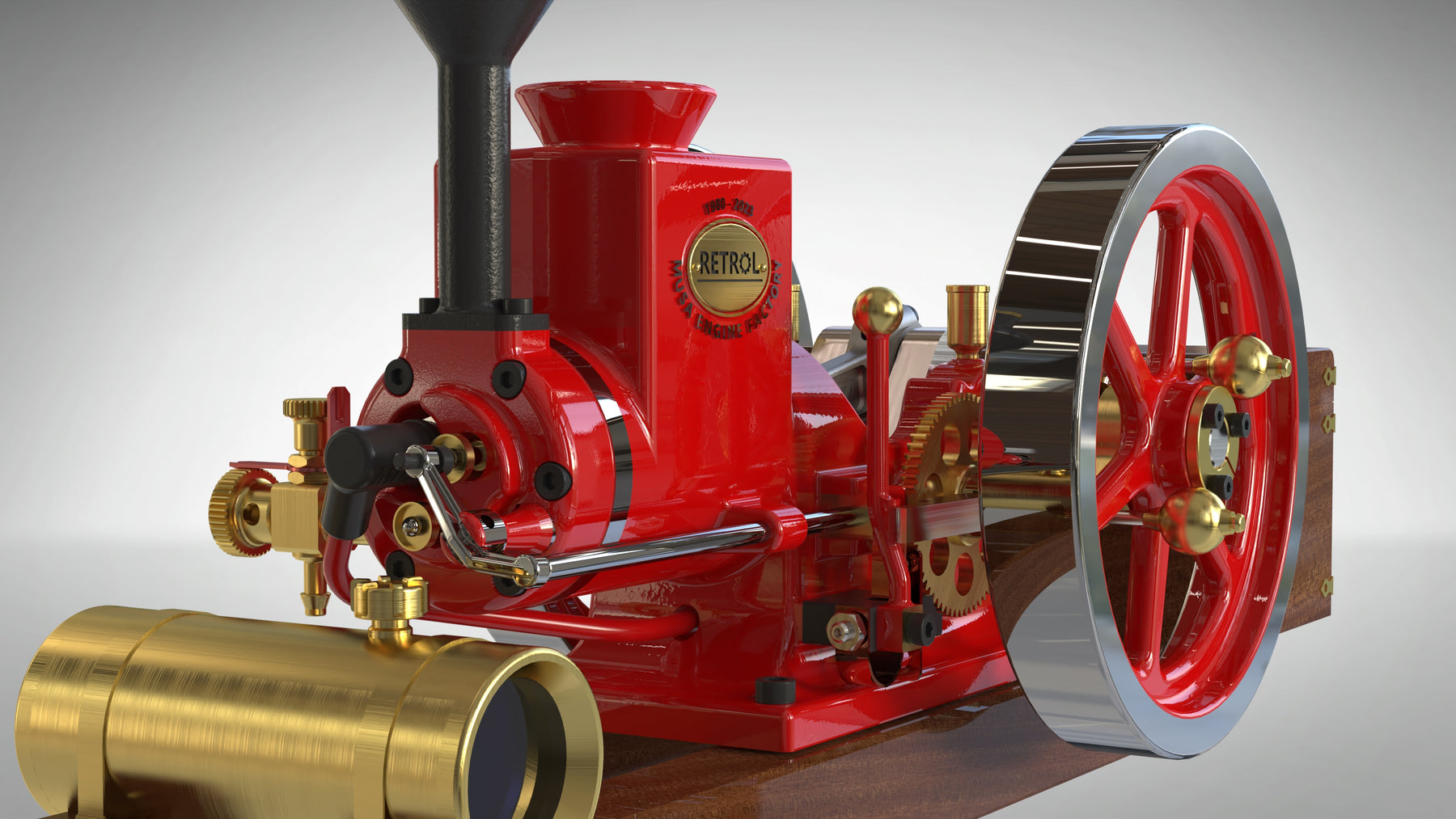
The Hit and Miss Engine: Combining Tradition and Innovation | EngineDIY
RETROL ENGINE HM-01 7cc Engine 4-stroke Horizontal Hit and Miss Internal Combustion Engine Model
In the world of internal combustion engines, there is a wide array of designs and technologies. While modern engines dominate the market with their efficiency and power, it is important to remember the pioneers that laid the foundation for these advancements. One such engine is the hit and miss engine, a classic design that has stood the test of time. In this blog post, we will explore the hit and miss engine, its history, working principles, and its relevance in today's world.
A Historical Perspective:
The hit and miss engine, also known as a flywheel engine, emerged in the late 19th century and gained popularity in the early 20th century. It was commonly used for various applications, such as water pumping, grain grinding, and even generating electricity. The engine's simplicity and reliability made it a valuable asset in rural areas, where electricity was not readily available.
How it Works:
The hit and miss engine operates on a unique principle. Unlike modern engines that rely on a continuous combustion process, the hit and miss engine employs a method of intermittent combustion. The engine is equipped with a flywheel, which stores energy during the power strokes and releases it during the idle strokes. The speed of the engine is regulated by a governor, which controls the ignition timing, allowing the engine to run at a consistent speed under varying loads.
Key Components and Mechanisms:
To better understand the hit and miss engine, let's explore its key components and mechanisms:
- Cylinder and Piston: The cylinder houses the piston, which moves up and down to create the power and idle strokes. The intake and exhaust valves are operated by the engine's camshaft.
- Ignition System: The hit and miss engine typically uses a spark plug for ignition, controlled by a simple ignition system that includes a magneto or a spark coil.
- Governor: The governor is responsible for regulating the engine's speed by adjusting the ignition timing. It maintains a constant speed by controlling the fuel supply and ignition spark, depending on the load.
Advantages and Limitations:
The hit and miss engine has several advantages that contributed to its widespread use in the past:- Simplicity and Durability: The design of the engine is straightforward, making it easy to operate and maintain. It is built to last and can withstand harsh conditions.
- Fuel Efficiency: The intermittent combustion process enables the engine to achieve good fuel efficiency, making it cost-effective for its time.
However, the hit and miss engine also has limitations that restricted its use:
- Limited Speed Range: Due to its design, the hit and miss engine operates optimally within a specific speed range, making it less adaptable to rapidly changing loads.
- Emission Concerns: As an older technology, the hit and miss engine lacks modern emission control systems and can produce more pollutants compared to contemporary engines.

Modern Applications and Preservation:
Although the hit and miss engine has been largely replaced by more advanced technologies, it still holds a special place in the hearts of collectors, enthusiasts, and museums. These engines are often showcased at exhibitions, demonstrating their historical significance and mechanical ingenuity. Additionally, some individuals continue to use hit and miss engines for specific applications, such as powering antique machinery or as a hobby.
The hit and miss engine represents a significant chapter in the evolution of internal combustion engines. Its simple yet effective design, along with its historical importance, has made it a beloved piece of engineering. While modern engines have surpassed it in terms of efficiency and performance, the hit and miss engine's legacy continues to be celebrated. It serves as a reminder of the ingenuity and innovation that paved the way for the remarkable engines we have today.
RETROL Engine HM-01 high and low speed switching stationary horizontal Hit and Miss engine model
Main product parameters:
Bore 20.0MM
Stroke 22.0MM
Displacement approx. 7.0cc
Dimensions as shown in three views
The RETROL team has spent 4 months developing and designing this new H&M engine model "HM-01" to further revolutionise and provide engine enthusiasts and collectors with an even higher performance, playable and economical Hit and Miss Engine Model. The new H&M engine model "HM-01" has been developed over a period of 4 months. The RETROL logo will be displayed on the side of the machine in C position, with the MUSA factory as a backdrop for the secondary logo. The RETROL team's philosophy has always been to pursue the line of excellence and to constantly strive to design more excellent and high quality products in order to enhance and consolidate the brand of RETROL in the world of scale engine modelling. The MUSA factory has always focused on product quality and scientific mechanical design, which can guarantee the production and processing of this engine from the appearance of shape, detailing can reach the first echelon level.
Product design:
(1) Transparent adjustable flow main oil cup design, fully meet the lubrication requirements, engine durability and longer service life. (2) New carburettor design, easier to adjust and more friendly to novices. (3) Back to the loud exhaust pipe design, more unique aesthetic flavor. (4) Two large flywheels with reasonable counterweight to meet the requirements of low speed running. (5) One flywheel has a spring loaded ball thrower design and the other flywheel has a split wide face pulley, the engine is very practical as a power output. (6) Specially designed with the rarely seen "fast and slow engine switching gear", which allows the engine speed to be switched between super slow running and high speed running for power output. This makes the engine more playable and the player more operable.

Product technology:
(1) the whole machine colour Ferrari red, using higher cost electrophoretic paint process surface treatment, to ensure the appearance of exquisite bright. (2) The main parts of the machine (body, flywheel, connecting rod, etc.) are made of stainless steel 304 casting. (2) All assembly surfaces are CNC-finished. (3) High carbon steel hardened one-piece crankshaft.
The main selling points highlights are listed below:
Stainless steel 304 casting of the main components of the whole machine
CNC machining of all assembly surfaces
High carbon steel hardened one-piece crankshaft
Fast and slow machine changeover gears
Split wide face pulley
Transparent adjustable flow main oil cup
New style carburettor
With reverberating exhaust pipe
Colour: Ferrari red (electrophoretic paint)
FROM:



Comments
Leave a comment